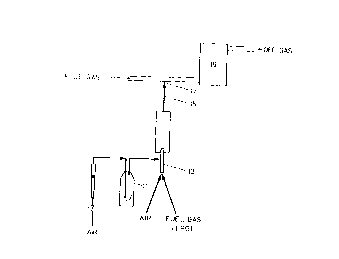Some of the information on this Web page has been provided by external sources. The Government of Canada is not responsible for the accuracy, reliability or currency of the information supplied by external sources. Users wishing to rely upon this information should consult directly with the source of the information. Content provided by external sources is not subject to official languages, privacy and accessibility requirements.
Any discrepancies in the text and image of the Claims and Abstract are due to differing posting times. Text of the Claims and Abstract are posted:
| (12) Patent: | (11) CA 2029394 |
|---|---|
| (54) English Title: | PROCESS FOR PURIFICATION OF OFFGASES |
| (54) French Title: | METHODE DE PURIFICATION DES EFFLUENTS GAZEUX |
| Status: | Expired and beyond the Period of Reversal |
| (51) International Patent Classification (IPC): |
|
|---|---|
| (72) Inventors : |
|
| (73) Owners : |
|
| (71) Applicants : |
|
| (74) Agent: | LAVERY, DE BILLY, LLP |
| (74) Associate agent: | |
| (45) Issued: | 1999-03-30 |
| (22) Filed Date: | 1990-11-06 |
| (41) Open to Public Inspection: | 1991-12-09 |
| Examination requested: | 1991-04-12 |
| Availability of licence: | N/A |
| Dedicated to the Public: | N/A |
| (25) Language of filing: | English |
| Patent Cooperation Treaty (PCT): | No |
|---|
| (30) Application Priority Data: | ||||||
|---|---|---|---|---|---|---|
|
-7-
The invention relates to a process for the removal
of acidic gaseous compounds from a stream of offgas by
introducing into the gasstream a core-gas containing solid
particles with a diameter of between about 40 and 1000 .ANG.
and treatment of the obtained gasmixture with ammonia.
L'invention porte sur une méthode pour éliminer les composés acides gazeux dans un circuit de gaz d'échappement, consistant à introduire dans le circuit gazeux un noyau de gaz renfermant des particules solides d'un diamètre d'environ 40-1000 angströms, et à traiter le mélange gazeux obtenu avec de l'ammoniac.
Note: Claims are shown in the official language in which they were submitted.
Note: Descriptions are shown in the official language in which they were submitted.

2024-08-01:As part of the Next Generation Patents (NGP) transition, the Canadian Patents Database (CPD) now contains a more detailed Event History, which replicates the Event Log of our new back-office solution.
Please note that "Inactive:" events refers to events no longer in use in our new back-office solution.
For a clearer understanding of the status of the application/patent presented on this page, the site Disclaimer , as well as the definitions for Patent , Event History , Maintenance Fee and Payment History should be consulted.
| Description | Date |
|---|---|
| Inactive: Reversal of expired status | 2012-12-02 |
| Time Limit for Reversal Expired | 2010-11-06 |
| Letter Sent | 2009-11-06 |
| Inactive: IPC from MCD | 2006-03-11 |
| Grant by Issuance | 1999-03-30 |
| Inactive: Final fee received | 1998-12-16 |
| Pre-grant | 1998-12-16 |
| Letter Sent | 1998-07-08 |
| Notice of Allowance is Issued | 1998-07-08 |
| Notice of Allowance is Issued | 1998-07-08 |
| Inactive: Status info is complete as of Log entry date | 1998-06-29 |
| Inactive: Application prosecuted on TS as of Log entry date | 1998-06-29 |
| Inactive: Approved for allowance (AFA) | 1998-05-27 |
| Application Published (Open to Public Inspection) | 1991-12-09 |
| All Requirements for Examination Determined Compliant | 1991-04-12 |
| Request for Examination Requirements Determined Compliant | 1991-04-12 |
There is no abandonment history.
The last payment was received on 1998-09-15
Note : If the full payment has not been received on or before the date indicated, a further fee may be required which may be one of the following
Please refer to the CIPO Patent Fees web page to see all current fee amounts.
| Fee Type | Anniversary Year | Due Date | Paid Date |
|---|---|---|---|
| MF (application, 7th anniv.) - standard | 07 | 1997-11-06 | 1997-09-22 |
| MF (application, 8th anniv.) - standard | 08 | 1998-11-06 | 1998-09-15 |
| Final fee - standard | 1998-12-16 | ||
| MF (patent, 9th anniv.) - standard | 1999-11-08 | 1999-09-13 | |
| MF (patent, 10th anniv.) - standard | 2000-11-06 | 2000-10-23 | |
| MF (patent, 11th anniv.) - standard | 2001-11-06 | 2001-09-06 | |
| MF (patent, 12th anniv.) - standard | 2002-11-06 | 2002-10-17 | |
| MF (patent, 13th anniv.) - standard | 2003-11-06 | 2003-11-05 | |
| MF (patent, 14th anniv.) - standard | 2004-11-08 | 2004-10-21 | |
| MF (patent, 15th anniv.) - standard | 2005-11-07 | 2005-10-19 | |
| MF (patent, 16th anniv.) - standard | 2006-11-06 | 2006-10-17 | |
| MF (patent, 17th anniv.) - standard | 2007-11-06 | 2007-10-17 | |
| MF (patent, 18th anniv.) - standard | 2008-11-06 | 2008-10-17 |
Note: Records showing the ownership history in alphabetical order.
| Current Owners on Record |
|---|
| HALDOR TOPSOE A/S |
| Past Owners on Record |
|---|
| PETER SCHOUBYE |